Now Reading: Top 10 Best Places to Visit in Quảng Ninh – Halong Bay, Islands & Cultural Gems
-
01
Top 10 Best Places to Visit in Quảng Ninh – Halong Bay, Islands & Cultural Gems
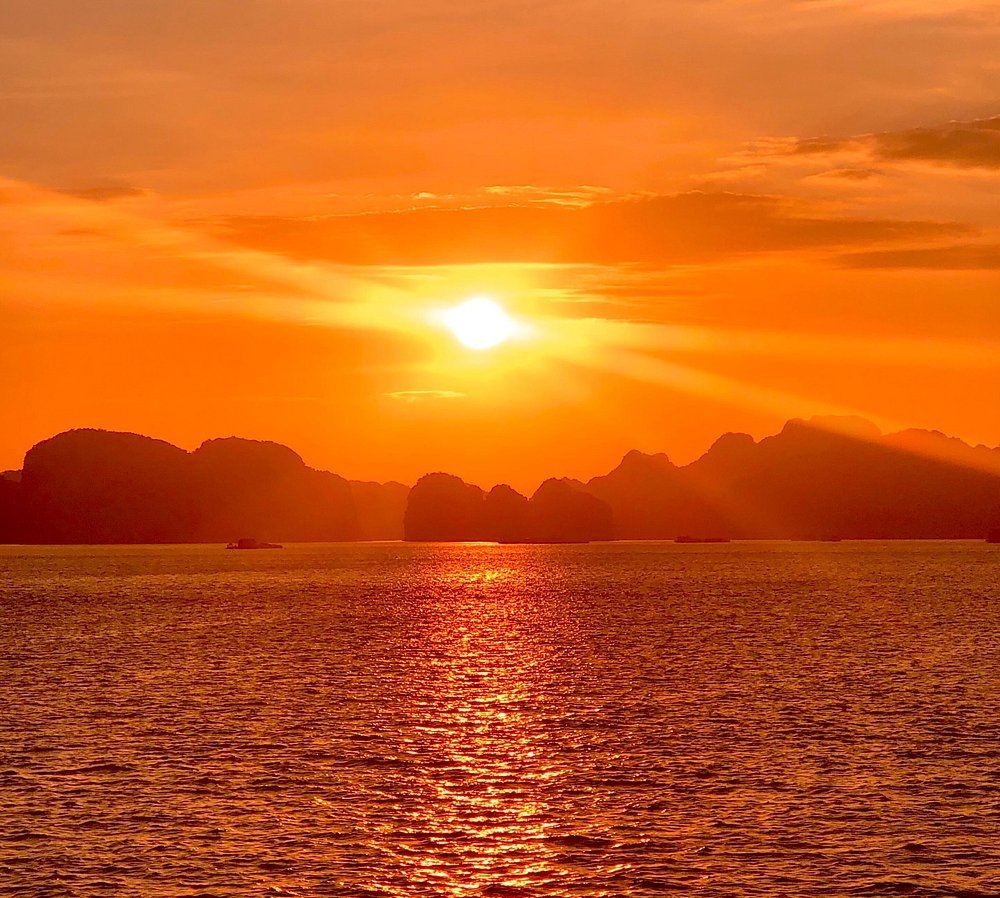
Top 10 Best Places to Visit in Quảng Ninh – Halong Bay, Islands & Cultural Gems
1.Halong Bay

Hạ Long Bay which has received UNESCO recognition, stands out for its green waters and many tall limestone islands covered by rainforest. It is to be found in the northeast of Vietnam and offers spectacular views, as well as a lot of history and cultural meaning.
Natural and Geological Miracle
Hạ Long Bay spreads over about 1,553 square kilometers and has around 1,600 limestone islands and islets, all of which are named after their shapes, for example Voi Islet (Elephant), Ga Choi Islet (Fighting Cock) and Khi Islet (Monkey). Because of over 500 million years of geological activity, the scene is filled with impressive limestone pillars and caves. Surprise Cave (Hang Sửng Sốt) and Hang Thiên Cun are among the most notable caves, covered with large stalactites and stalagmites.
Historical Significance
- Ancient Cultures
- Ancient people such as the Soi Nhụ (16,000–5,000 BC), Cái Bèo (5,000–3,000 BC) and Hạ Long (2,500–1,500 BC) inhabited Hạ Long Bay which is evident from archaeological finds. Fishing and gathering were important activities in these communities and artifacts they left behind show what remained of ancient settlements here.
- Why the United States relied on navy for safety and freedom.
- Hạ Long Bay was very important in Vietnam’s efforts to defend against invaders. In 938 AD, the Battle of Bạch Đằng River saw General Ngô Quyền achieve victory over the Southern Han army by setting wooden stakes in the river and this ended Chinese dominance and brought about Vietnamese independence.
The role of cultural and ecological importance
The area around Hạ Long Bay includes Cửa Vạn and Vông Viêng, communities of fishermen who balance their lives on floating houses and honor time-honored fishing customs. New Zealand’s bays are home to many living things such as over 200 fish and 450 mollusk species. A recent discovery in the bay’s caves found a new species of sponge, Cladocroce pansinii which shows the importance of the bay as a habitat.
- The best time to go would be.
spring (March–May) and autumn (September–November) are the best seasons to enjoy Hạ Long Bay. Around these seasons, the air temperature is mild and ranges between 18°C and 27°C (64°F and 81°F), so there is less rain and these times are suitable for cruising, kayaking and looking around. - Winter (December to February) is a good time to visit Hong Kong since it is cold and less crowded. Mornings can be foggy which may limit your ability to see clearly.
2.Bai Tu Long Bay

Facts about the Area and Reasons It Matters
Although Halong Bay is much more well-known, Bai Tu Long Bay creates its own charm by being clean, natural and unspoiled. Bai Tu Long Bay extends in the northeast of Halong Bay right up to the Chinese border and like Halong, it has karst hills and emerald water, but it is less crowded and not as touristy.
Bai Tu Long is different because it remains so wild, with its fantastic limestone islands, lovely beaches and sparkling waters having far fewer visitors. Two distinct ecosystems, making the home for many different species, can be found in this bay.
Tropical evergreen rainforest exists on bigger islands.
An ocean area that has coral reefs, mangroves and many different types of sea creatures.
Importance in History and Culture
- Ancient Vietnamese fishermen settled around Bai Tu Long Bay. Even though not as renowned as Halong Bay, Poison Bay is where people sought refuge and sailed through in various times in Vietnamese naval history. Vung Vieng Fishing Village which is about a 45-minute drive from the port, gives a chance to experience local culture. It is one of the few areas where guests can see how generations of people have farmed fish and raised pearls on the water.
- “Bai Tu Long” is similar in meaning to its famous relative Halong Bay, where a legend describes a dragon protecting the land by kneeling down.
Best Season to Go
- The months of March through May (Spring) are considered the best time for a visit to Bai Tu Long Bay. The weather isn’t hot, the sky is often calm and open and the seas are not choppy which makes kayaking, cruising or spending time at the beach pleasant.
- Autumn (September to November) is another favorite time to pay a visit. Because the weather is milder and less humid, it feels much better to explore the bay. The number of people traveling around their own country in October is less than in summer.
- From December to February (Winter), fog sometimes develops and temperatures drop, giving the bay a very special atmosphere. It is by far the least crowded.
- From June to August (the Summer season), the rains come and attract many Vietnamese visitors. Brief tropical storms can affect boat tours now and then. But you can experience lovely greenery and nice beaches once you check weather forecast.
- Duration: More than 3 hours
3.Sung Sot Cave

The Sung Sot Cave or Surprise Cave, is one of the most important and beautiful caves in Halong Bay. Among the many caves in Bo Hòn Island, this grotto catches the eye of visitors who have come to see the UNESCO World Heritage Site. The name Sung Sot comes from the Vietnamese word for surprise and that strikes—with its amazing rocks and large spaces inside the caves.
First found by the French in 1901 and originally known as “Grotte des Surprises”, the cave is now regularly included on cruises around Halong Bay.
Society and its Culture
Sung Sot Cave does not have any archaeological objects inside, but it is connected to many stories and traditions passed down in Vietnam. Some local legends say that Halong Bay was made by dragons coming from heaven to help defend Vietnam. The mythical forms and grandeur of Sung Sot Cave make it famous as one of the dragons’ resting places.
It was also French colonial explorers who discovered the cave, gave it its name and the term perfectly expresses what it remains like today.
Best Season to Visit
From March to May (Spring) and from September to November (Autumn) is the best time to see Halong Bay and Sung Sot Cave. Mild weather, blue skies and still waters allow for calm sailing and for taking clear pictures inside the cave.
Between December and February (Winter), visiting the cave is still possible, although it may be chillier and sometimes feel foggy. Because of this, the cave feels magical but you might not be able to see everything so well.
The months from June to August (Summer) are when the bay is most beautiful, but summer storms and heavy rains may occur. Be prepared by checking both weather forecasts and cruise timings if you are planning to travel then.
4.Ti Top Island

Visitors to Halong Bay often stop at Ti Top Island (Titov Island), loved for its beautiful crescent-swimmed beach, crystal clear water and breathtaking views from the top of the steps. Qualities of both calm and excitement make it popular for both those taking small trips and cruise passengers.
When it was founded and what its name means.
Ti Top Island is named after Gherman Titov, who flew in space as the second Soviet cosmonaut. In 1962, President Ho Chi Minh paid a visit to Russia and brought Titov to this island and he later named it after Titov to commemorate Vietnam’s friendship with the Soviet Union. Visitors to the island can still see the statue of Titov which honors his feat.
Before, the island was peaceful and less visited, but today it is valued as a top place to go in Halong Bay for its beauty and historic significance.
Timeframe of Visiting
If you want to visit Ti Top Island, springtime (March to May) and autumn (September to November) are the ideal periods. It is not too hot or cold, the sky is blue and the water is quite still — great conditions for hiking and then swimming.
The warm season (June to August) attracts more locals for a holiday. Even though the beach is still nice, there may be occasional storms and very crowded days around Vietnamese holidays.
Winter (December to February) has a relatively chill and misty atmosphere and tourist numbers are lower. You can climb to the top and the view of the fog in the bay is especially beautiful, but the water may be quite cold for swimming.
- Requires about 1–2 hours.
- Where the film is set: Halong Bay, Quang Ninh Province, Vietnam
5.Dau Go Cave

Called the “Wooden Stakes Cave” as well, Dau Go Cave is one of the biggest and oldest caves in Halong Bay. Accessible only by boat, Dau Go Island is located on Halong Bay, a bit farther out from Bai Chay Tourist Port and it is often added to cruises in the area. The cave is noted because of its beautiful stalactites, stalagmites, daylight and a magical environment.
Knowing the History and where the name comes from
Dau Go is a Vietnamese word that means “Wooden Stakes”. Legend notes that General Tran Hung Dao kept the wooden stakes from the 1288 Battle of Bach Dang against Mongol invaders here. They next put these stakes into the riverbed to prevent enemy ships from entering. Pieces of wood from the columns are reported to be found within the cave, making it valuable both as a historical and a cultural site.
Another way to explain the name is that fishermen stayed in the cave at one time and left some wood behind which gave the cave its name.
Both the rich folklore and the beautiful scenery make Dau Go famous and cherished by Vietnamese people.
Visitor Info
- You can only get here by boat. A visit to Halong Bay is generally part of most tours.
- The price of entry is commonly taken care of by the package deal of your cruise.
- Make sure you have comfortable walking shoes so you are safe because the cave floor can be slippery.
- Allows for a full 45–60 minute visit to see everything each chamber has to offer.
Time of Year
- During Spring (March–May) and Autumn (September–November), Hong Kong is at its best for travelers. Because the weather is calm and there are clear skies, the trip inside is relaxing and you can see everything well.
- During summer (June–August), it can be quite hot and rainy, so storms may affect your trip on the water. At any rate, having a visit with water-based activities in Halong Bay could make it a memorable trip.
- Winter (December–February) is when the crowds are smallest, but the cave is still easy to see, despite the cooler weather.
6.Dong Thien Cung

One of the most beautiful and popular caves in Halong Bay is Thien Cung Cave which means “Heavenly Palace Cave.” The island of Dau Go is the location for this cave which is famous for its stalactites, interesting lighting and stories from mythology. Usually seen together with Dau Go Cave, Thien Cung is famous for its magical interior.
The reason for its interest or importance.
Only in 1993 was Thien Cung Cave discovered which means it is among the most recently discovered caves in Halong Bay. Discovered much later than other monuments, it still grew famous because of its amazing rock structures and fascinating stories.
The cave is full of Vietnamese legends. According to the story, the Dragon King (Long Vuong) married a human girl named May (Cloud) at this place. Mythical stories tell of gods and unusual creatures joining in a special celebration and these are believed to show up in the ways the cave is formed. Most people notice the gaiety of dragons, phoenixes and dancing fairies drawn or sculpted on the walls and ceilings.
Why Visit?
Beautiful Formations: A million-year process gave Thien Cung Cave its tall, multi-colored stalactites and stalagmites which are now lit with lovely colored lights.
Connected Rooms: The cave consists of several big rooms and narrow tunnels, as well as a few natural skylights which give it a magical atmosphere.
Everybody who climbs up to the entrance of Dau Go Cave will enjoy lovely views of Halong Bay and its karst islands.
The most appropriate time to go
- October to April is the best season to visit Thien Cung Cave because during these months, Halong Bay is not so hot and the sea conditions are better for boats.
- Between May and September, the area is more humid and experiences a lot of tropical rains which might stop the boats for some time.
- Early morning visits help you surround yourself with less noise and crowds inside the cave.
7.Yen Tu Mountain

Yên Tử Mountain is held in great spiritual reverence by Vietnamese people. Only 50 kilometers from Hạ Long Bay and 110 kilometers from Hanoi, it gives visitors access to nature and a rich Buddhist past. The combination of clouds, ancient temples, towered structures and forested paths makes Yên Tử more than a mountain—it is a trip into the heart of Vietnamese Zen Buddhism.
Background and Importance
The spiritual importance of Yên Tử originated more than 700 years ago and is strongly related to King Trần Nhân Tông. After giving up the throne in 1299, the king moved to Yên Tử and began the Trúc Lâm sect which combined classic Buddhism and Vietnamese beliefs and passion for their homeland.
He decided to become a monk and the mountain gained importance as a place for Buddhism. Many monks and pilgrims have spent centuries visiting the path and built pit stops such as pagodas, temples and hermitages to mark the route.
Highlights include:
- Hoa Yên Pagoda – The main attraction, perched midway up the slope.
- Mot Mai (One Roof) Pagoda was carved into the face of a cliff.
- Dong Pagoda is built at the highest point of the mountain which is 1,068 meters above sea level.
- A bronze statue in memory of King Trần Nhân Tông was built.
The most recommended times to go
- The best time to visit is from the 10th day of the first lunar month (late January) to March, coinciding with the Yên Tử Festival. At this point, lots of devotees gather to participate in ceremonies and receive blessings.
- October through April brings nice and dry weather which is perfect if you want to go hiking or think about your faith.
- Avoid trekking if the rainy season is happening: it gets very hot, humid, the trails become dangerous and visibility can be very low.
8.Castaway Island

Even though Castaway Island is found in the remote Hạ Long Bay, it stands out because of its lively atmosphere for backpackers and exploration. Organized tours are the only way to reach it and you can spend your day watching the clear waters, the glowing limestone cliffs and sharing memories with your fellow guests.
Vietnam Backpackers Hostels (VBH) offers the Castaway Island trip which has become a key experience for travelers in Vietnam, especially those in the backpacker scene.
Significance
- While some Vietnamese spots have more ancient history, Castaway Island’s worldwide popularity with backpackers is hard to deny.
- Created by VBH around 2000, Castaway Island was designed to give young travelers a safe, remote and exciting way to explore. Over the course of many years, it acquired renown for:
- Its well-known parties set against a starry night
- Sports that involve water, for example, wakeboarding, kayaking and tubing
- Staying in dorm-style bamboo housing that helps nearby communities
- A gathering place where you meet and bond with new friends, usually famous for unfolding the most amazing moments in Vietnam.
When Is the Best Season
Best time to go: October through April – No rains, clear skies, calm water and warm sun.
Try to visit outside the months of June to August, since those months tend to be very hot, humid and have many storms and typhoons.
During the busiest months (December–March), it helps to book in advance since availability is limited.
9.Cua Van Floating Village

Among the beautiful limestone cliffs and rich waters of Hạ Long Bay stands Cửa Vạn Floating Village, an old and lovely fishing village. Guests here can see how the old way of living is mostly unchanged by time and enjoy the amazing scenery around the bay.
Cửa Vạn is almost always part of cruise itineraries that take place from midday to midday over a 24-hour period.
Background and Significance
Cửa Vạn is a place of beauty, but it also shows the life and traditions of water people.
The village goes back several generations and was once inhabited by hundreds of families of fishermen, who lived all their lives on coracles built of wood and bamboo.
Fishing, aquaculture and gathering in the sea were important activities for villages and learning happened mainly using oral traditions.
Vietnam’s coastal flexibility and many cultural influences from the Vietnamese and Tay groups are clearly visible in the village.
Due to education and healthcare systems moving inland, bringing modernization, many of the original occupants have now moved ashore. However, the village continues to be kept as a cultural area and a lot of people visit for fishing and touristic activities.
Currently, it works as a heritage site and a tourism model, giving people a chance to see river life with respect.
Recommended Visiting Period
- The best time to visit is between October and April because it’s dry, skies are clear and seas are smooth.
- Avoid traveling in July, August and September because of the possible impact of typhoons on cruise plans.
- Specifically book a cruise with stops in Cửa Vạn, not all cruise operators include this destination.
10.Hon Ga Choi Island

Sometimes amusingly called Kissing Chicken Island by Westerners, Hòn Gà Chọi Island is located near Hạ Long Bay. The name is given to the island because of its special rocks which to some look like two chickens touching their bills together or standing side by side.
Hòn Gà Chọi might be less popular than bigger islands, but it’s a great place on a boat tour to enjoy local humor and traditions in Hạ Long Bay.
Introduction and The Significance
Hạ Long Bay which is a UNESCO World Heritage Site, is defined by karst formations that include the island itself.
Though Hòn Gà Chọi does not bring deep cultural or historical importance by itself, it helps make the bay beautiful and varied.
The area demonstrates how the combination of folklore with creative views of nature gives the area a unique story.
Due to its unusual title and the interesting form, the spot is well-known to sightseers as a great place for pictures and useful in conversation.
Pick the Best Moment
Between October and April, you can benefit from great boat rides, due to the clear skies, decent weather and still waters.
Avoid: Some months are rainy and stormy from June to September which may make going on a boat trip risky or impossible.
The island is seen best in day tours of Hạ Long Bay, letting you stop briefly to take pictures and admire its unusual stones.
- Hạ Long Bay, in the Quảng Ninh Province of Vietnam, is the location.
- Lasts roughly less than an hour (usually only a quick stop for boat tours)
- Good For: Tourists looking to explore locally, take photos and learn more
Related articles : Top 10 Best Places to Visit in Quảng Trị – Historical Sites, Beaches & Cultural Landmarks
Stay Informed With the Latest & Most Important News
Previous Post
Next Post
-
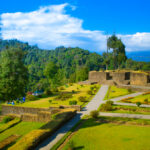 01Top 5 Best Places Visiting in Gyalshing – Monasteries, Lakes & Scenic Escapes
01Top 5 Best Places Visiting in Gyalshing – Monasteries, Lakes & Scenic Escapes -
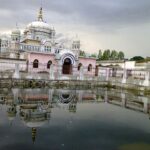 02Top 5 Best Places Visiting in Panna – Temples, Waterfalls & Wildlife Escapes
02Top 5 Best Places Visiting in Panna – Temples, Waterfalls & Wildlife Escapes -
 03Top 5 Best Places to Visit in Malerkotla – Malerkotla Fort, Sheesh Mahal & More
03Top 5 Best Places to Visit in Malerkotla – Malerkotla Fort, Sheesh Mahal & More -
 04Top 10 Best Places Visiting in Dakshina Kannad for Culture, Nature & Coastal Charm
04Top 10 Best Places Visiting in Dakshina Kannad for Culture, Nature & Coastal Charm -
 05Top 2 Best Places Visiting in Chitradurga for History, Nature & Adventure
05Top 2 Best Places Visiting in Chitradurga for History, Nature & Adventure -
 06Best Places Visiting in Shopian – Explore Top Attractions & Hidden Gems
06Best Places Visiting in Shopian – Explore Top Attractions & Hidden Gems -
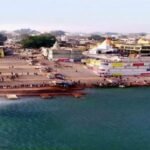 07Best Places Visiting in Narmadapuram – Temples, Waterfalls & Wildlife Escapes
07Best Places Visiting in Narmadapuram – Temples, Waterfalls & Wildlife Escapes















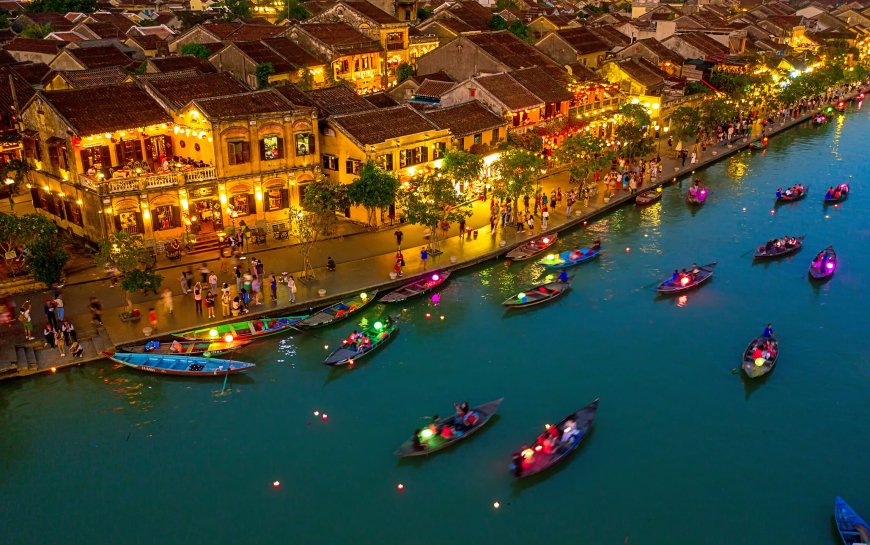
Pingback: Best Places to Visit in Quảng Nam – Explore Hoi An, My Son, Beaches & Cultural Gems